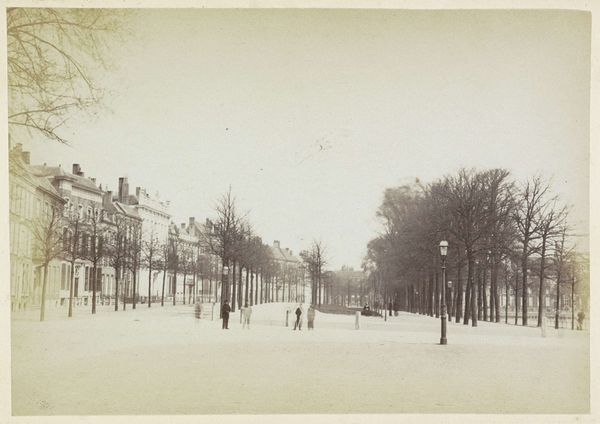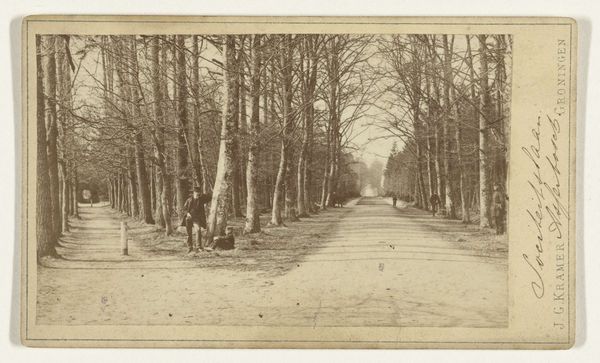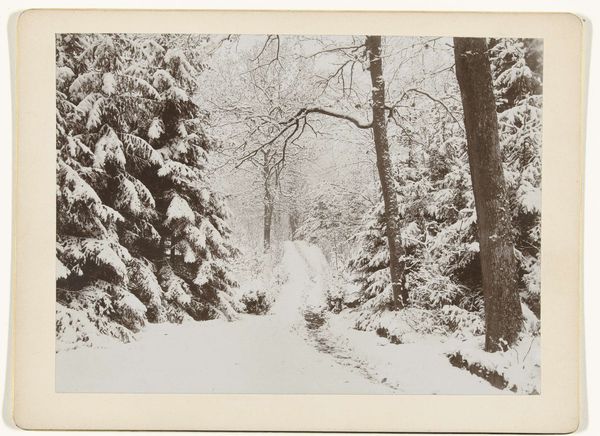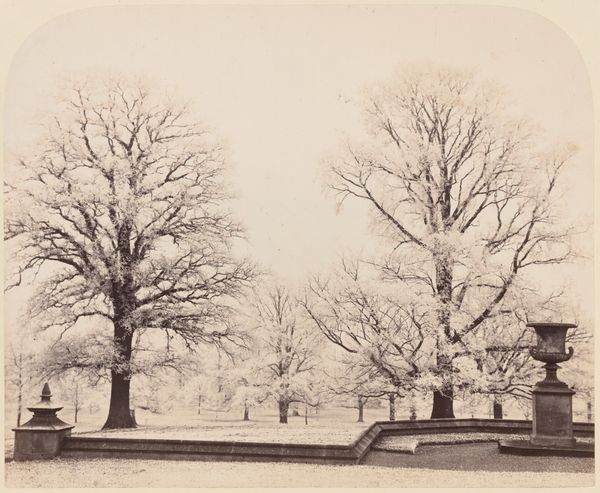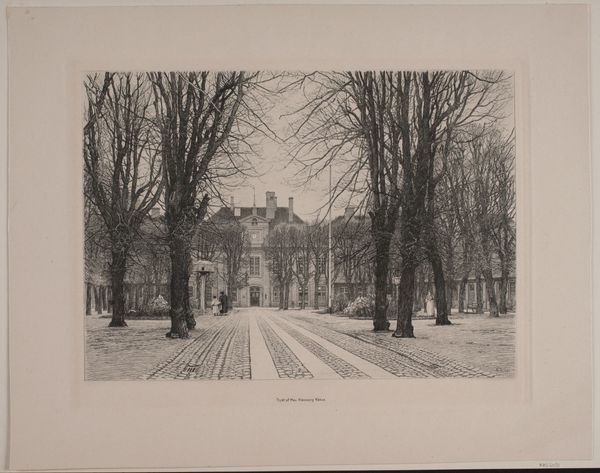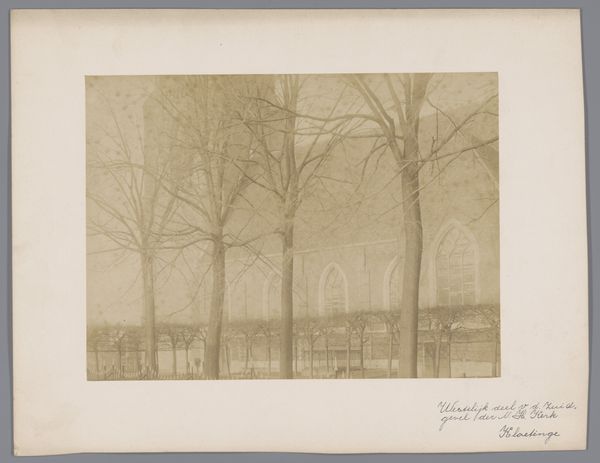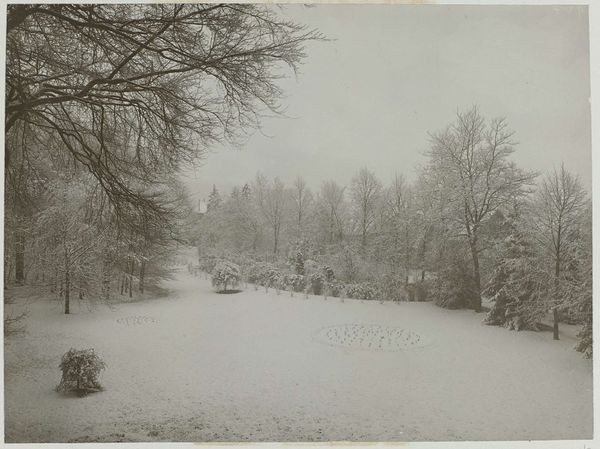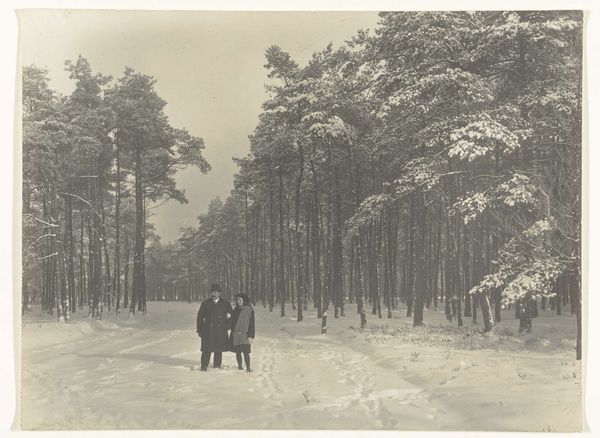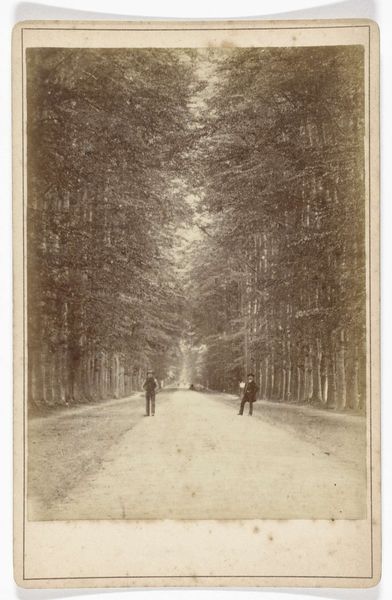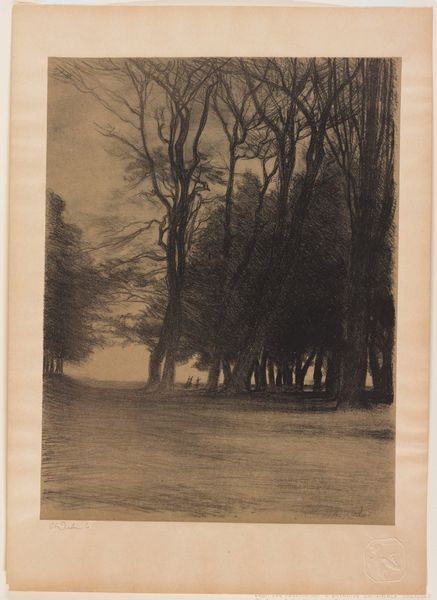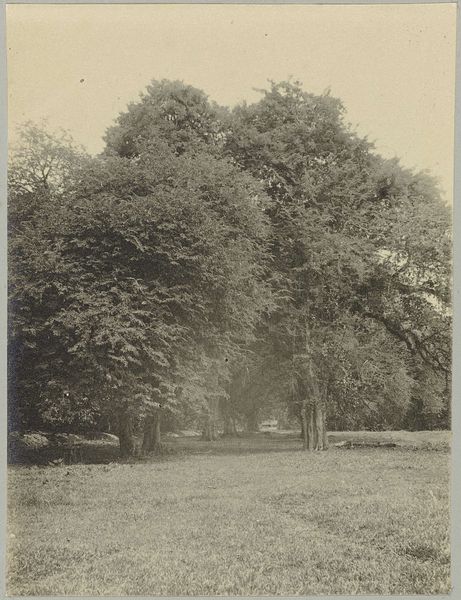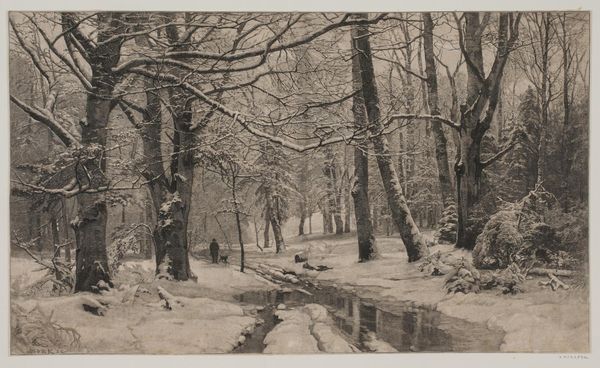
Besneeuwd park met op de achtergrond Slot Zeist Possibly 1897
0:00
0:00
henrypauwvanwieldrecht
Rijksmuseum
Dimensions: height 167 mm, width 230 mm, height 199 mm, width 268 mm
Copyright: Rijks Museum: Open Domain
Curator: Welcome. Here we have "Besneeuwd park met op de achtergrond Slot Zeist," a photograph attributed to Henry Pauw van Wieldrecht, likely taken around 1897. The setting is a park in winter, with the Zeist Castle subtly visible in the background. Editor: The immediate feeling is one of stark quietude, wouldn't you agree? A subdued monochrome that really highlights the contrast between the dark trees laden with snow and the expanse of the open, bright park. Curator: Yes, the materiality itself tells a story. Think of the photographic processes of the late 19th century—the limitations of capturing subtle tonal ranges, the use of specific chemical developers. This informs the picture. Editor: And beyond just a technical view, consider this within the broader context. Photography at that time served a specific purpose within the Dutch upper classes. Pauw van Wieldrecht documented estate life, reflecting social divisions in a moment of relative peace, albeit one constructed upon existing inequalities. Curator: Absolutely. The choice to photograph the park in winter, devoid of activity, also suggests a certain labor dynamic. The usual activities associated with the estate—the tilling of the grounds, the tending of the gardens—are paused by the weather, which obscures the constant labour that went into the aristocratic life. The social relationships were literally being 'covered'. Editor: Indeed. You also have this very subdued landscape, and that speaks volumes, as these kind of pictures often served as instruments of power, affirming the ownership and control these families held. This almost subdued image presents an intriguing commentary of privilege in slumber, awaiting its return. Curator: That brings us to another point: the composition. The line of the fence cutting across the foreground is crucial. The production, assembly and placing of that boundary represents labor of construction. Fences are not passive. Fences create work. Editor: True. Looking at it this way reminds us not to be lulled into this apparent winter calm. This photo holds a subtle mirror to a period where social class dynamics, hidden under that beautiful snow blanket, quietly endured. Curator: Examining the means by which images like these were made allows us to better appreciate not only the artistry, but the historical weight that even seemingly peaceful scenes carry. Editor: And by bridging aesthetics and sociopolitical reflection, we are empowered to ask a more holistic question: Whose stories get told through art, and to what end?
Comments
No comments
Be the first to comment and join the conversation on the ultimate creative platform.
